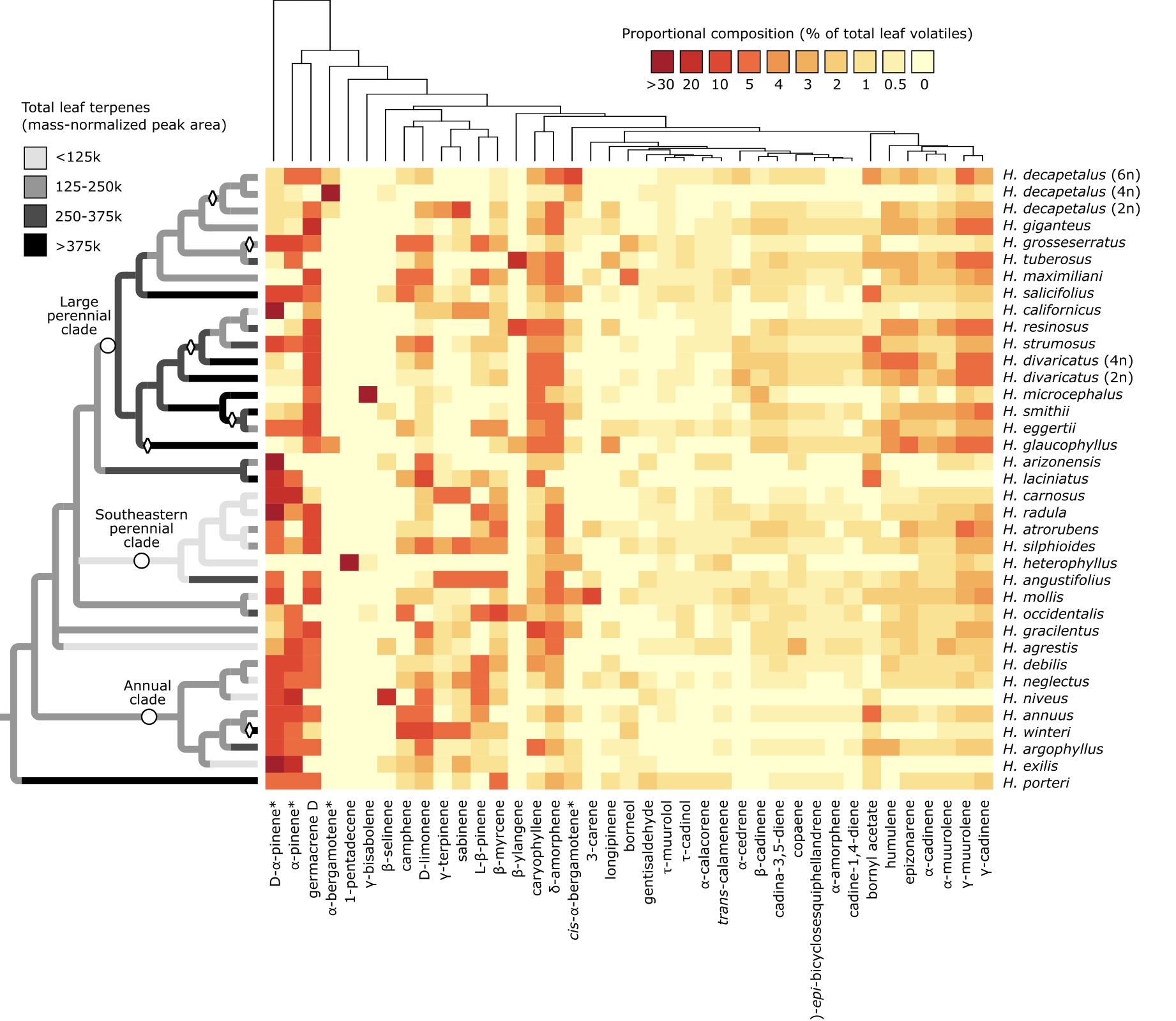Broad diversity in monoterpene–sesquiterpene balance across wild sunflowers: Implications of leaf and floral volatiles for biotic interactions
Published in American Journal of Botany, 2022
Recommended citation: Bahmani, K., Robinson, A., Majumder, S., LaVardera, A., Dowell, J. A. , Goolsby, E. W., and Mason, C. M.. 2022. Broad diversity in monoterpene–sesquiterpene balance across wild sunflowers: implications of leaf and floral volatiles for biotic interactions. American Journal of Botany 109(12): 2051–2067. https://doi.org/10.1002/ajb2.16093 https://doi.org/10.1002/ajb2.16093
Premise
As plant lineages diversify across environmental gradients, species are predicted to encounter divergent biotic pressures. This study investigated the evolution of volatile secondary metabolism across species of Helianthus.
Methods
Leaves and petals of 40 species of wild Helianthus were analyzed via gas chromatography–mass spectrometry to determine volatile secondary metabolite profiles.
Results
Across all species, 500 compounds were identified; 40% were sesquiterpenes, 18% monoterpenes, 3% diterpenes, 4% fatty acid derivatives, and 35% other compounds such as phenolics and small organic molecules. Qualitatively, annuals and species from more arid western climates had leaf compositions with a higher proportion of total monoterpenes, while erect perennials and species from more mesic eastern habitats contained a higher proportion of total sesquiterpenes. Among species, mass-based leaf monoterpene and sesquiterpene abundance were identified as largely orthogonal axes of variation by principal component analysis. Profiles for leaves were not strongly correlated with those of petals.
Conclusions
Volatile metabolites were highly diverse among wild Helianthus, indicating the value of this genus as a model system and rich genetic resource. The independence of leaf and petal volatile profiles indicates a low level of phenotypic integration between vegetative and reproductive structures, implying vegetative defense and reproductive defense or pollinator attraction functions mediated by terpene profiles in these two organs can evolve without major trade-offs. The major biosynthetic pathways for the major terpenes in wild Helianthus are already well described, providing a road map to deeper inquiry into the drivers of this diversity.

